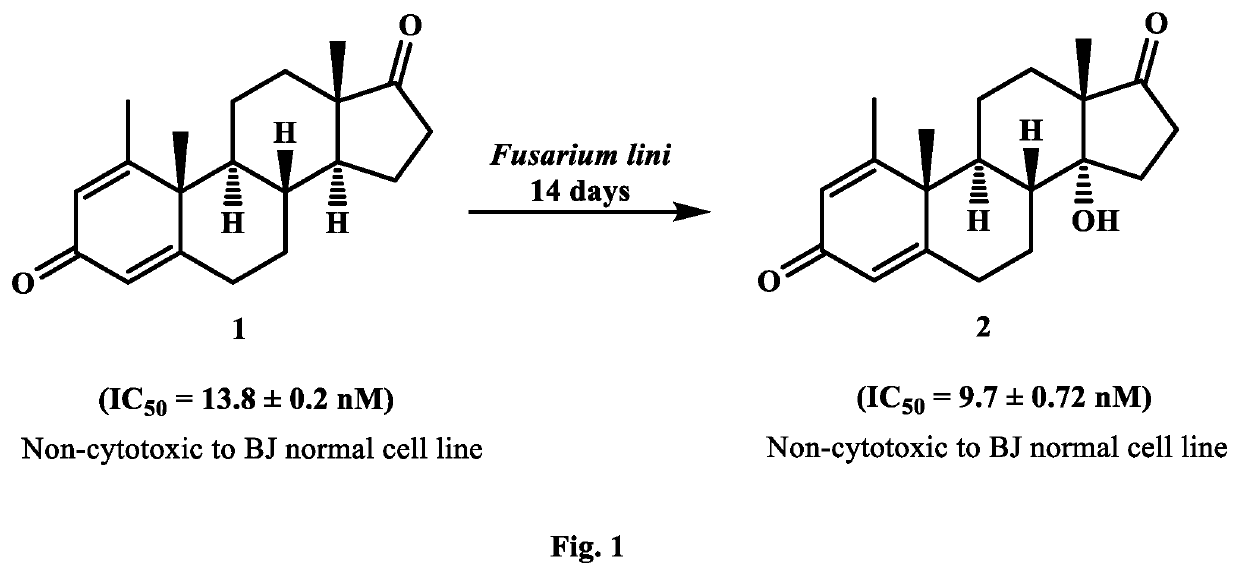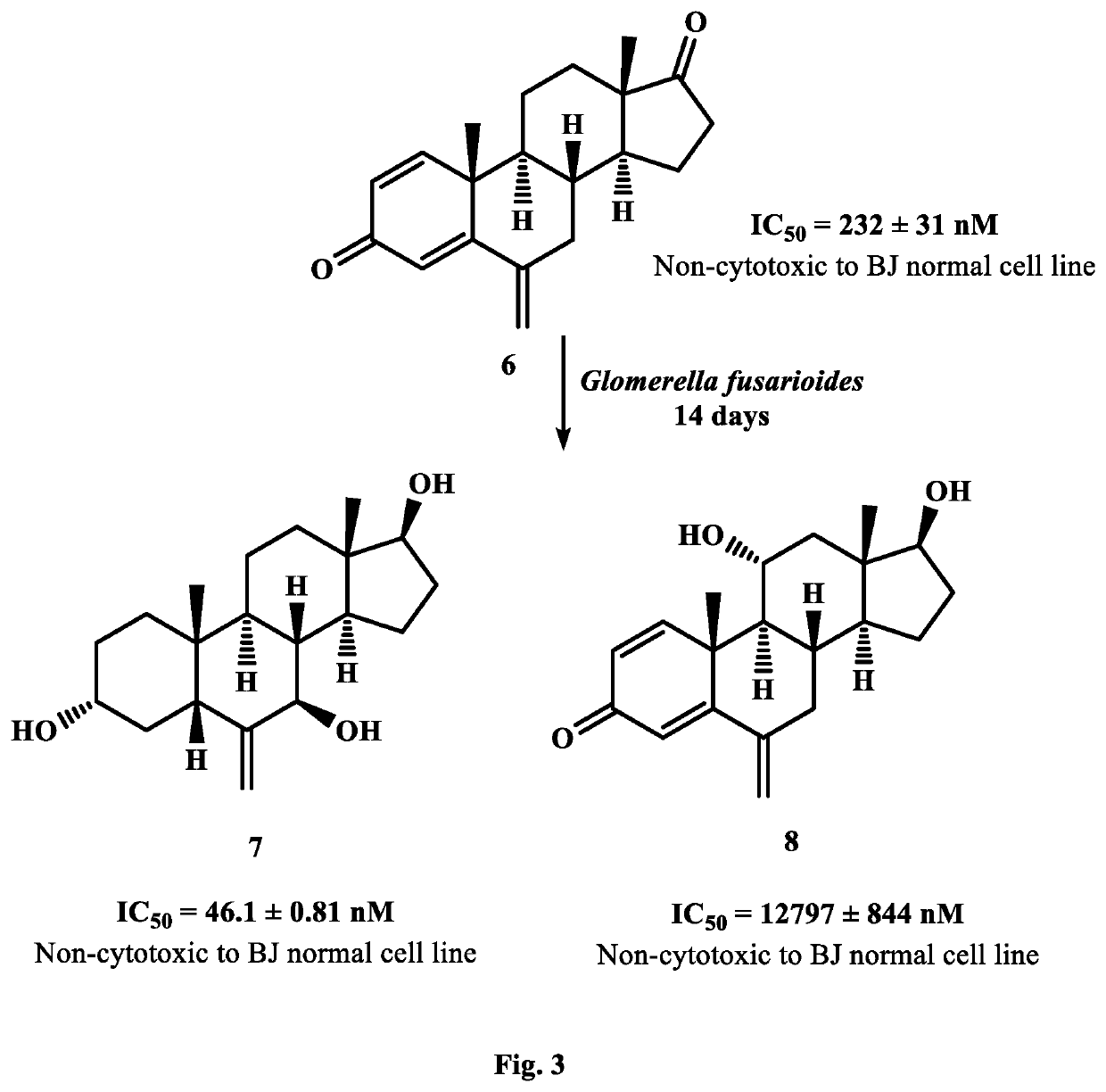Synthesis of New Potent Aromatase Inhibitors Through Biocatalysis of Anti-Cancer Drugs, Atamestane, Drostanolone Enanthate, and Exemestane
a technology of aromatase inhibitors and biocatalysis, which is applied in the direction of pharmaceutical active ingredients, organic active ingredients, medical preparations, etc., can solve the problems of increasing the risk of breast cancer, inadequate treatment of breast cancer, and difficult synthesis of structural analogues of steroidal drugs
- Summary
- Abstract
- Description
- Claims
- Application Information
AI Technical Summary
Benefits of technology
Problems solved by technology
Method used
Image
Examples
Embodiment Construction
Experimental
Media Preparation
[0017]One-liter media for each fungus was prepared by mixing 10 g glucose, g NaCl, 5 g peptone, 5 g KH2PO4, and 10 mL glycerol in 1 L distilled water.
[0018]On the basis of small-scale screening results, 5 L of media for each fungus was prepared by mixing aforementioned ingredients. Media (200 mL) was transferred into 25 Erlenmeyer flasks of 500 mL and cotton plugged. These flasks were autoclaved at 121° C., and then cooled at room temperature. Media was inoculated with each fungal cell culture. separately under sterilized conditions, and placed for four days on a rotary shaker (121 rpm). After the mature growth of F. lini, and G. fusarioides in each flask, 2 g of each drug was dissolved in 25 mL of methanol, and dispensed (1 mL) in each fungal-containing flask. These flasks were again placed on rotary shaker (121 rpm) at 25° C.
Extraction
[0019]After incubation, ethyl acetate (EtOAc) was added in each flask to stop the reaction, and filtered to...
PUM
 Login to View More
Login to View More Abstract
Description
Claims
Application Information
 Login to View More
Login to View More - R&D
- Intellectual Property
- Life Sciences
- Materials
- Tech Scout
- Unparalleled Data Quality
- Higher Quality Content
- 60% Fewer Hallucinations
Browse by: Latest US Patents, China's latest patents, Technical Efficacy Thesaurus, Application Domain, Technology Topic, Popular Technical Reports.
© 2025 PatSnap. All rights reserved.Legal|Privacy policy|Modern Slavery Act Transparency Statement|Sitemap|About US| Contact US: help@patsnap.com



